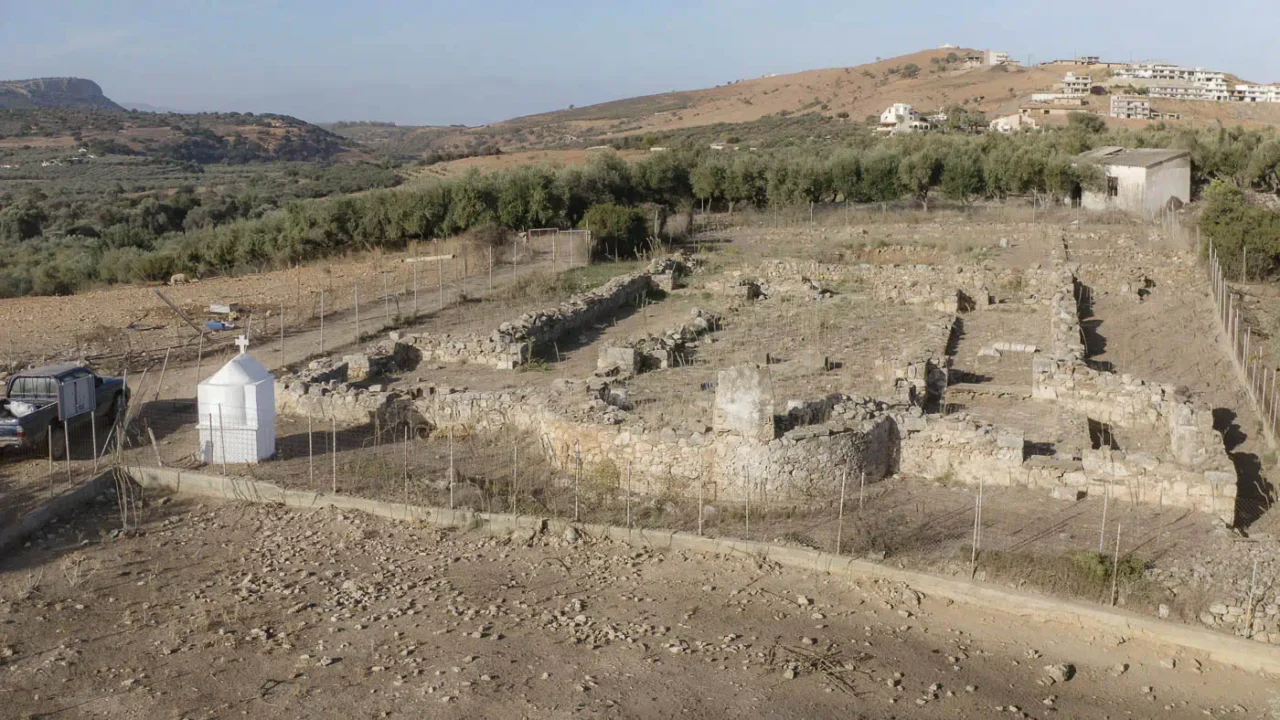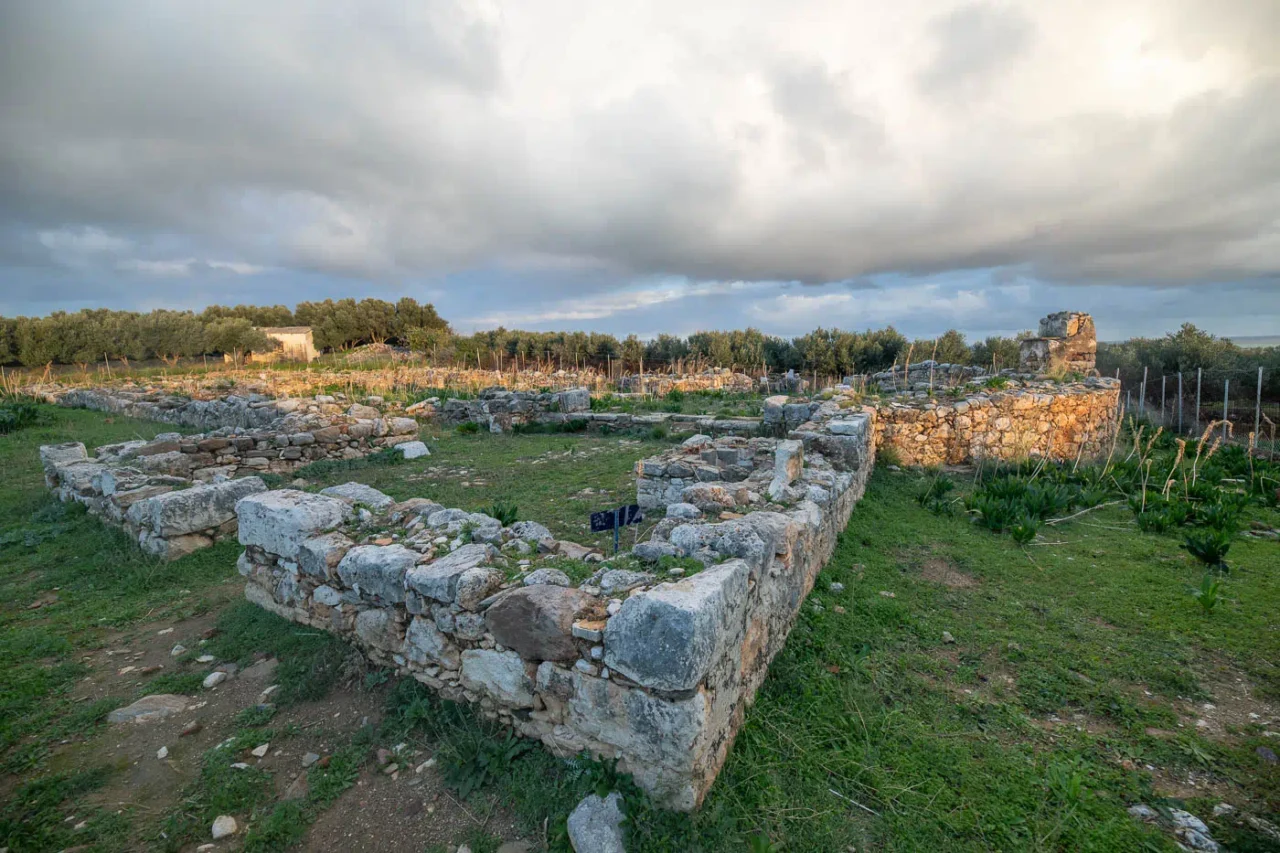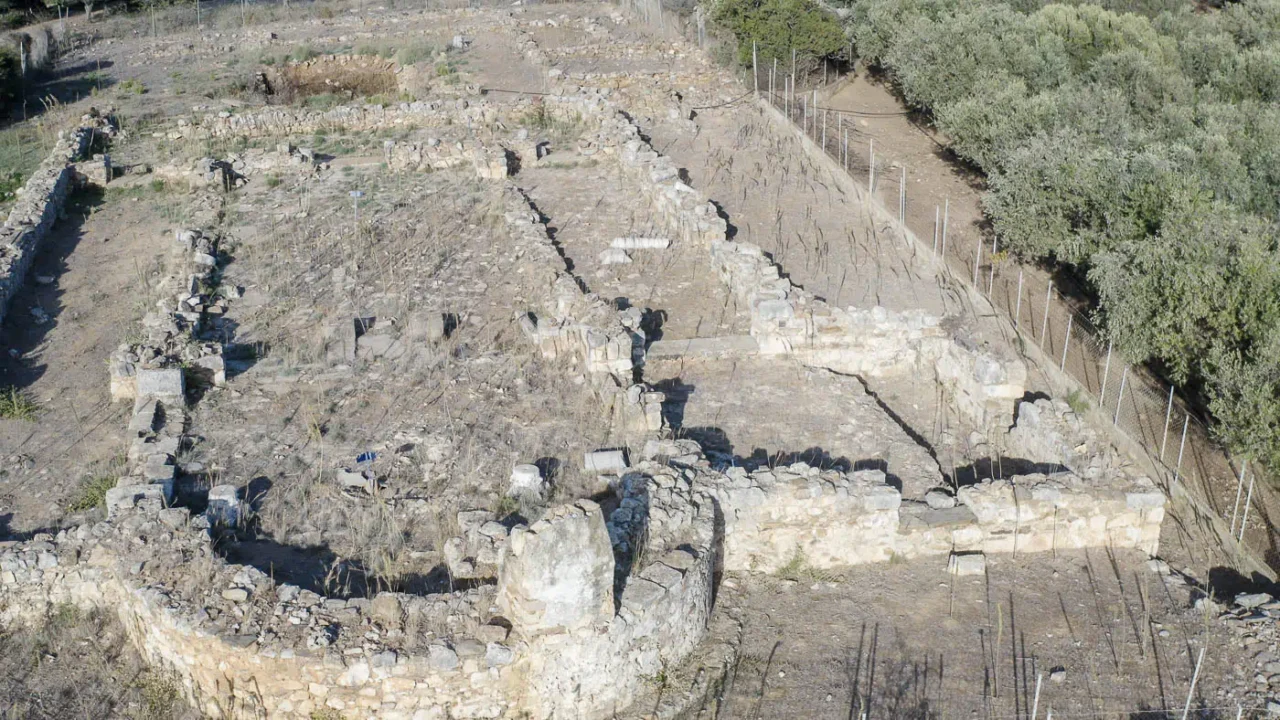



Located on the northern coastline of Crete, near the modern village of Panormo, the archaeological site of the Early Christian Basilica of Agia Sofia stands as a testament to the island’s vibrant religious history. Constructed between the 5th and 6th centuries AD, this imposing structure once served as a major center for early Christian worship and community life.
The basilica’s architectural design reflects the prevailing style of early Christian churches in the Mediterranean region. A three-aisled basilica with a transept, it formed a cross shape, spanning an impressive 54 meters in length and 23 meters in width. This size indicates the basilica’s importance and suggests that Panormo, then a bustling port town, was a significant hub of early Christian activity.
Archaeological excavations at the site have revealed fragments of frescoes, mosaics, and inscriptions, providing valuable insights into the basilica’s original grandeur and the daily life of its early Christian community. The presence of tombs and funerary inscriptions suggests that the basilica also served as a burial ground for prominent members of the community.
However, the basilica’s prominence was not to last. In the 7th century AD, Arab invaders swept through Crete, leaving destruction in their wake. The Agia Sofia Basilica suffered extensive damage, with its once-vibrant artwork shattered and its structure severely compromised. Despite this devastation, the site continued to be used for religious purposes until the 9th century, demonstrating the resilience of the local Christian community.
Today, the ruins of the Agia Sofia Basilica offer a glimpse into Crete’s complex and multifaceted past. Although much of the original structure has been lost to time and conflict, the remaining foundations, walls, and architectural fragments provide valuable clues about early Christian architecture and the basilica’s historical significance.
The site has undergone extensive archaeological investigation, with excavations revealing numerous artifacts and architectural features. While the basilica is not fully reconstructed, the remaining ruins allow visitors to appreciate the scale and grandeur of the original structure. The site is now protected and preserved as an important cultural and historical landmark, attracting visitors interested in early Christian history and Cretan heritage.
Key Points:
- Construction Period: 5th-6th century AD
- Location: South of Panormo village, Crete
- Dimensions: 54 meters long, 23 meters wide
- Historical Significance: Major early Christian center, evidence of Arab invasion and resilience of local community, insight into early Christian architecture and burial practices
- Current Status: Archaeological site, partially preserved ruins
Access
Just few meters away from a paved road.


There are no comments yet.